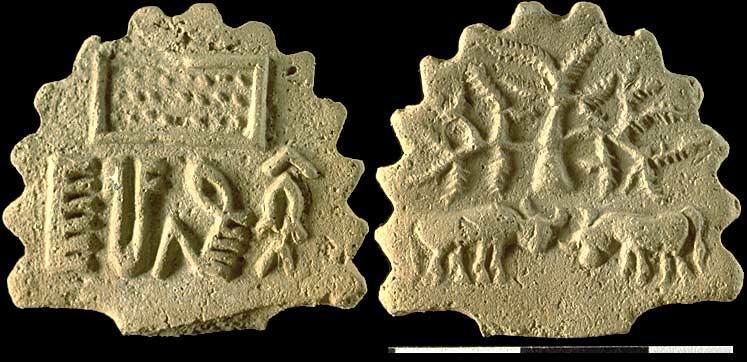"The contexts of script and changes in the writing over time indicate that the Indus script was versatile and that it was probably used to communicate complex ideas as well as multiple languages. The disappearance of the Indus script can be associated with the transformation and decline of Indus urban centers," writes the author in this 2020 overview of what we know about the Indus script and its context (p. 237). Although many pieces in the development of the Indus script remain unknown given the way early sites were excavated, it does seem clear that there was a trajectory of development from early incised potters marks and geometric button seals to the use of animal motifs with signs above them. Here too there were steps along the way: "The orientation of the animal on the seals is an important indicator of cultural style and ideology. The orientation of the animal motifs is not highly standardized during the Kot Dijian and initial Harappan Period 3A. When impressed into clay the right facing animals on the Period 3A seals would be facing to the left in the seal impression. This is opposite to the direction of the elephant seal found at Harappa in the Kot Diji levels (see above). The change in direction appears to indicate a period of fluctuation in seal design during the initial Harappa Phase 3A" (p. 247).
This concise summary, based on the latest research and discussions around many significant issues, also discussed which language the Indus script may represent: "Based on the study of place names and the names of rivers and geographical regions of the Indus, it is most likely that several major language families were present during the period of the Indus cities. The major language families defined by linguists include Dravidian, Mundari (Austro-Asiatic), Indo-Aryan, Sino-Tibetan and language “X” of the Neolithic Period (Fairservis and Southworth, 1989, Southworth, 2005). The ancestral forms of these languages may have been spoken in different parts of the greater Indus Valley region and if the Indus script was used to write names of people or deities, it is not unlikely that some if not all of these languages are represented in the inscriptions found on seals and pottery" (p. 249).
The article also deals with the disposal of seals, their role in trade, and the importance of the unicorn motif, with this interesting note: "The unicorn symbol clearly represented one of the most widespread communities and when they no longer had power, the symbol was no longer used. The unicorn symbol clearly represented one of the most widespread communities and when they no longer had power, the symbol was no longer used. This total obliteration suggests that the unicorn symbol was not something that most people wanted to remember" (p. 251). This vanishing act is certainly worth pondering, and it remains to be explained how something that was so integral to a culture at its height could so completely absent from later cultures even as many other ingredients and motifs survived.
The article includes detailed drawings which lay out the development of the script on various surfaces very nicely, a complete biography, and numerous insights that make it a comprehensive introduction and guide to one of the great remaining puzzles in ancient Indus studies.
Citation: Kenoyer 2020 The Origin and Development of the Indus Script: Insights from Harappa and other Sites. In Studies on Indus Script, edited by Kaleemullah Lashari, National Fund for Mohenjodaro, Karachi, pp. 1-20.
Image: This unique mold-made faience tablet or standard (H2000-4483/2342-01) was found in the eroded levels west of the tablet workshop in Trench 54. On one side is a short inscription under a rectangular box filled with 24 dots. The reverse has a narrative scene with two bulls fighting under a thorny tree.

